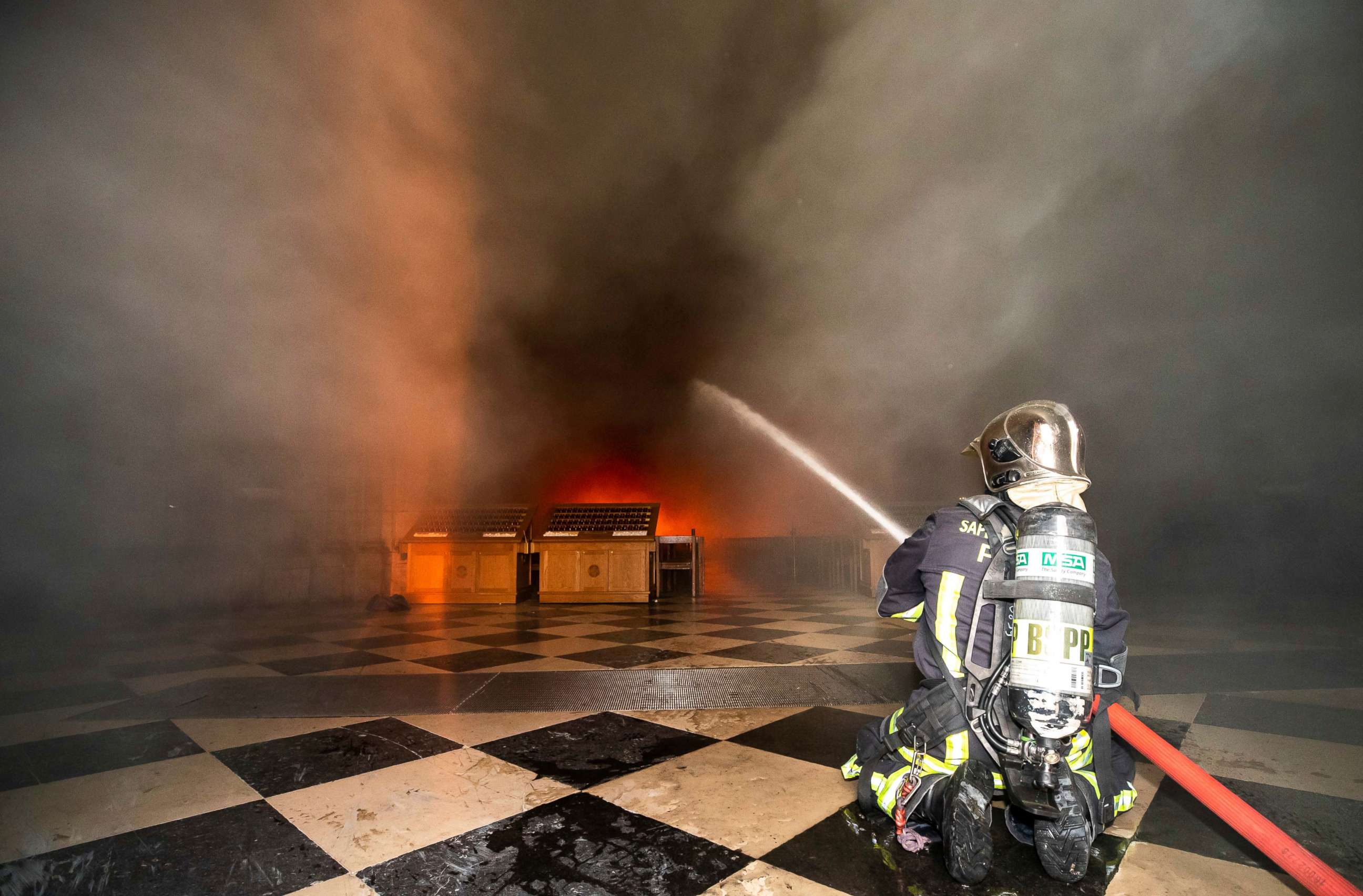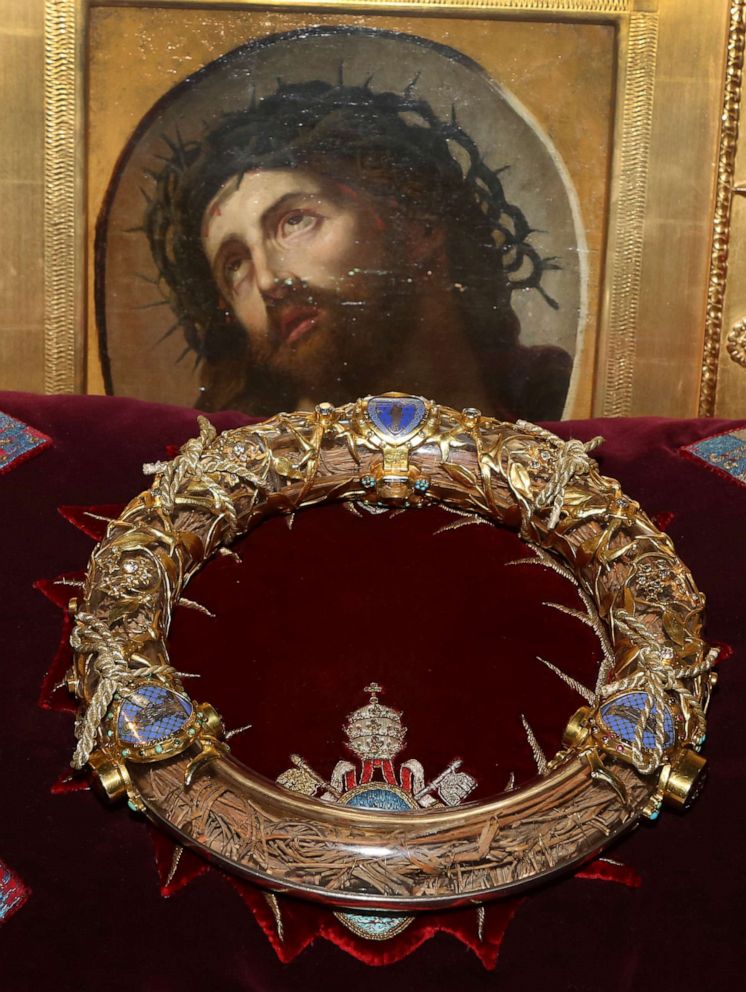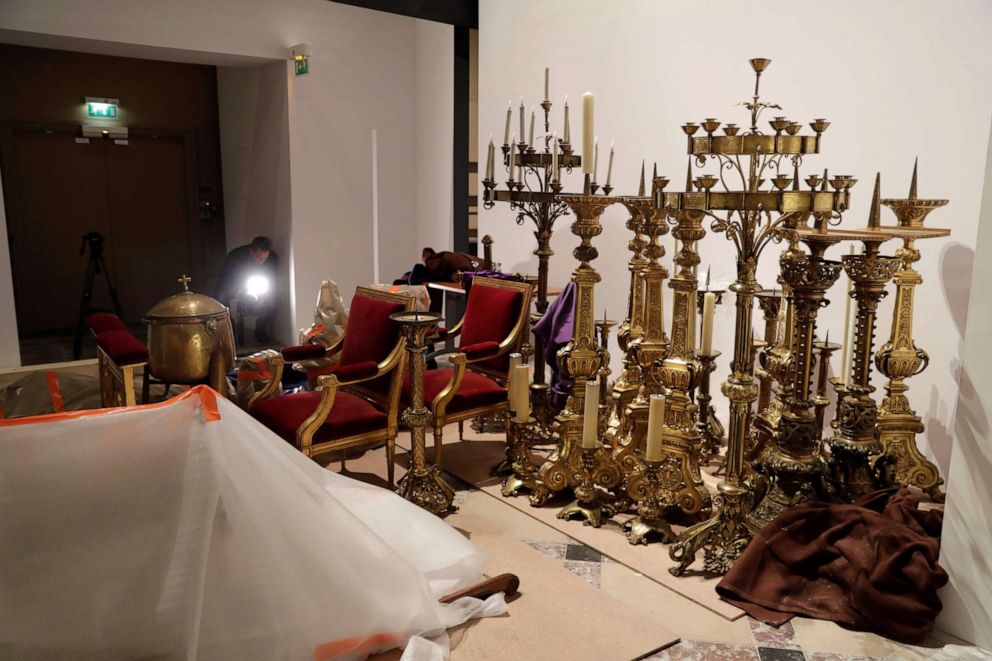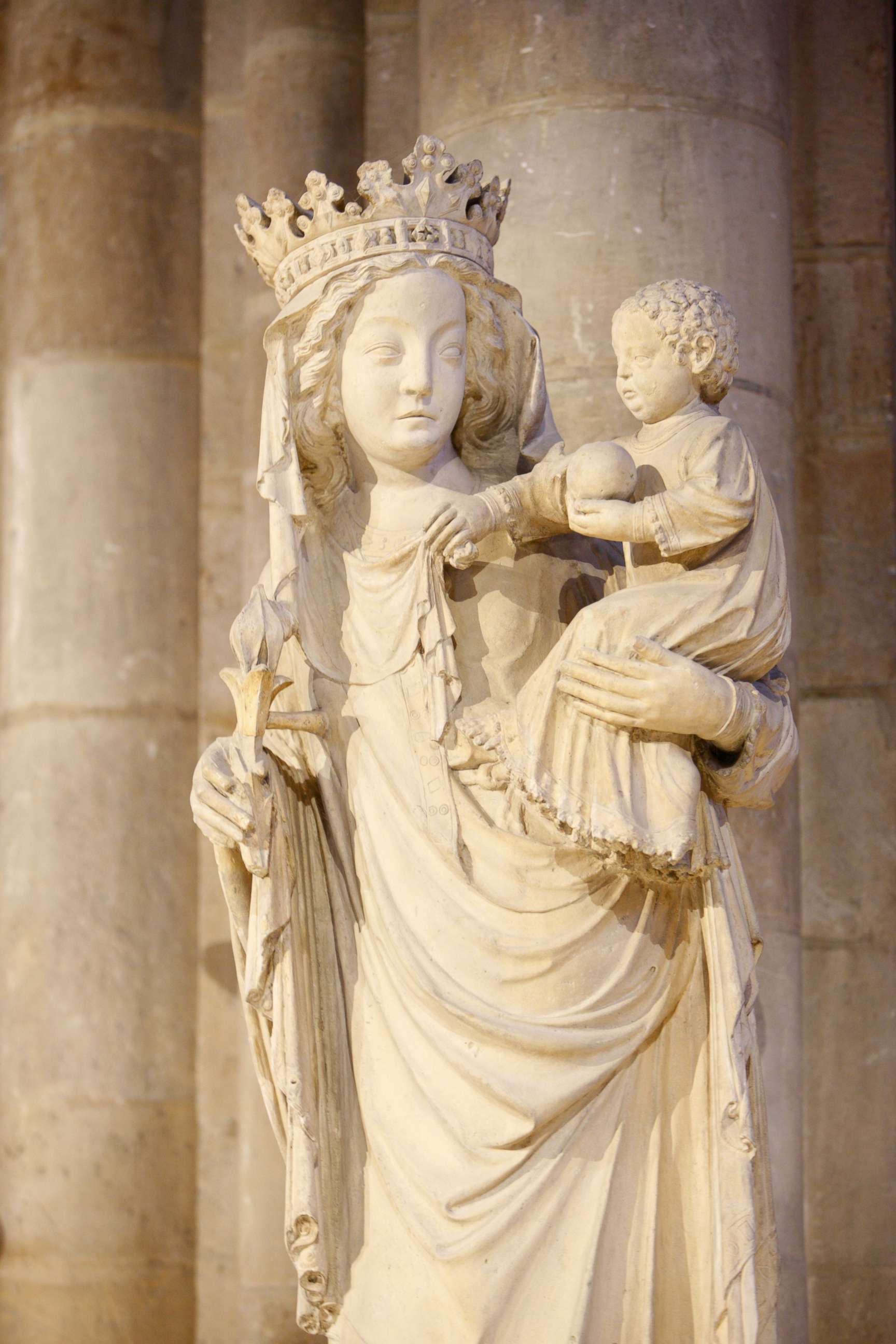After Notre Dame Cathedral fire, concerns for treasures not yet accounted for
Notre Dame serves as a guardian for precious relics and artifacts.
LONDON -- Notre Dame Cathedral itself is a precious landmark, but it also serves as a guardian to priceless artifacts and works of art, many of which are yet to be named and confirmed as safe following Monday night's powerful fire.
The French culture minister Franck Reister told reporters outside the church that a large number of sculptures and paintings had been taken from Notre Dame and transported to the city’s town hall.

Some of Christendom’s most sacred objects, such as the ‘Crown of Thorns’ and the tunic of St Louis, are now known to have been saved in the rescue efforts, with tales of heroism for the people who managed to salvage them, Reister said.
The Crown of Thorns is believed to be the twist of thorns worn by Jesus Christ in the crucifixion, which was brought to Paris in the 13th century by Baldwin II, the emperor of Constantinople at the time, as a gift to King Louis IX.

The crown, which is the cathedral's most precious item, is about 8 inches in diameter and made up of rushes braided together and bound by golden wire.
Jean-Marc Fournier, the chaplain of the Paris fire brigade, leaped inside the building as it was on fire to save the crown as well as the Blessed Sacrament — also known as the Eucharist, which symbolizes Jesus’ body.
Fournier is already known for his bravery during the 2015 Paris attacks — having attended to the injured in the Bataclan theatre, administering last rights, absolution and praying for those who were inside.
The cathedral also housed the "True Cross," a fragment purported to be part of the cross that Jesus was crucified on along with a nail that was used. French media have reported that these relics have been saved but officials have not yet confirmed.

Inside the cathedral is also the iconic Madonna and Child statue. Sharing a name with the cathedral, the Notre Dame de Paris dates back to the 14th century. Its status is not yet clear.

Some of Notre Dame’s most iconic works of art form part of the cathedral, such as the ancient stained glass windows. While they appear to have survived, they still haven't been inspected and there are fears that they have been damaged beyond repair or have sustained serious damage.

Of concern is also the cathedral's iconic organ. There are three in Notre Dame, but the most impressive is the Great Organ, which has five keyboards, 109 stops and close to 8,000 pipes.
Dating back to the 15th century, the organ was progressively added to over the centuries to become one of the largest in France.





